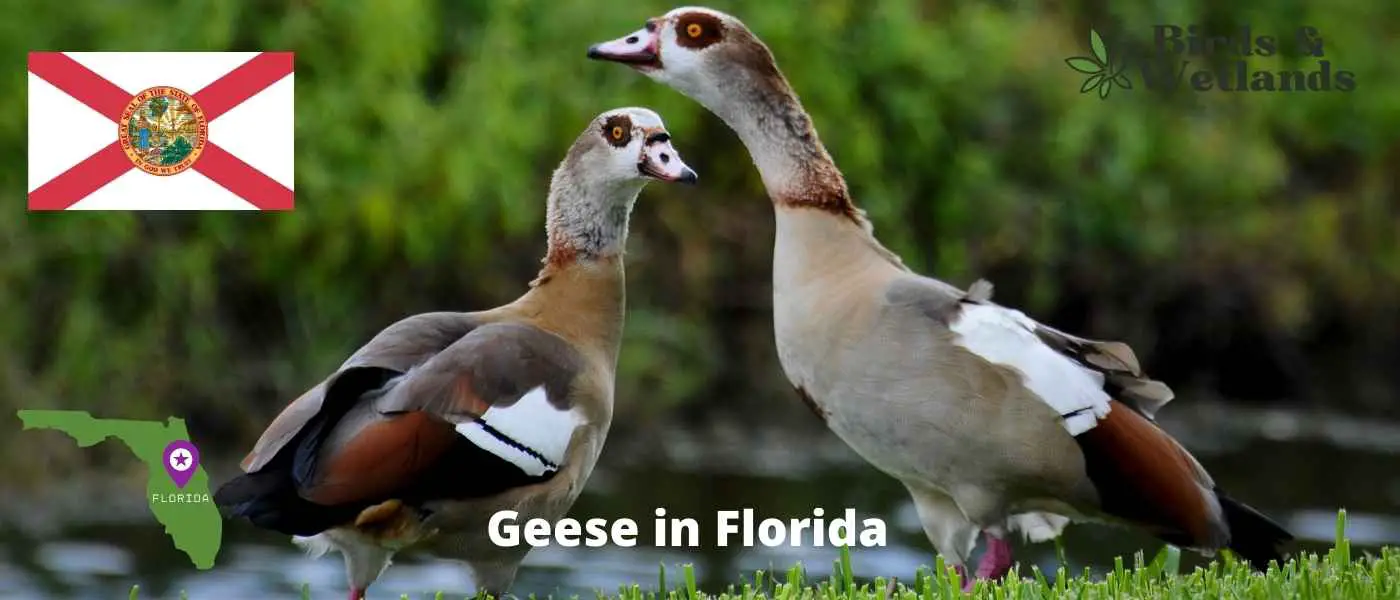There’s something special about watching geese fly overhead. Their pattern in the sky always seems so precise and orderly, as if they’re following a specific plan. It’s no wonder that these waterfowl have been featured in folklore and mythology all around the world!
In this guide, we will take a closer look at these fascinating creatures in Florida and learn more about their behavior and ecology.
What type of geese are in Florida?
There are three types of geese in Florida, the Canada Goose, the Snow Goose and the Egyptian goose. The Canada Goose is the most common, and you can find them in nearly every park or body of water across the state.
The Snow Goose is less common, but can be found in some of the northern parts of Florida. The Egyptian goose is the rarest of the three, and can only be found in a few locations in southern Florida. There are more geese species in Georgia and even more geese types in Alabama.
Egyptian Goose
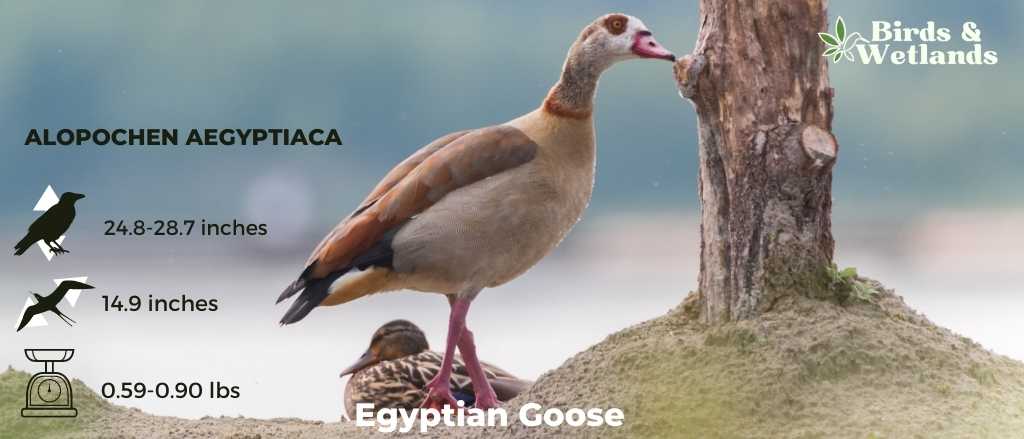
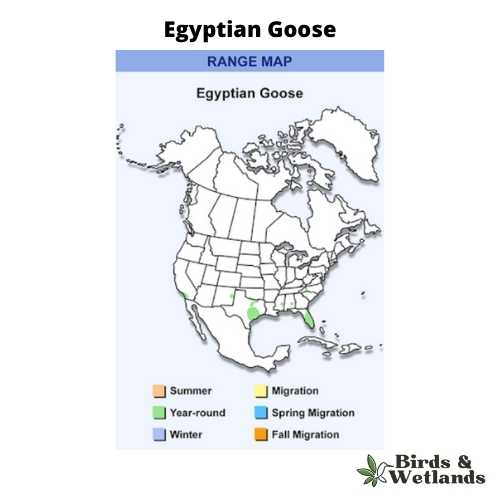
Listen
Scientific Name: Alopochen aegyptiaca
Length: 24.8 to 28.7 cm
Wingspan: 38 cm
Weight:1.5 to 2.3 kgs
The Egyptian Goose is a distinct waterfowl species celebrated for its unique coloration and adaptability to various environments.
Appearance: Egyptian Geese are quite striking, displaying a combination of brown, white, and grey feathers. They also have a chestnut patch around their eyes and on the chest, along with a distinctive dark brown ring around their lower neck. Their pink legs and feet and pinkish bill stand out against their body color.
Diet: The diet of the Egyptian Goose primarily consists of plant matter. They feed on grasses, seeds, leaves, and crops, and can often be seen grazing in fields and on the water’s edge.
Reproduction: Egyptian Geese typically make their nests in a variety of places including tree cavities, reed beds, and cliffs. The female lays a clutch of 5 to 12 eggs, which she incubates for about a month.
Originally native to Africa, the Egyptian Goose has established populations in parts of the United States, where it was introduced through the pet trade. Despite not being native, they have adapted well to American habitats, particularly in suburban and urban areas where they can often be seen in parks and on golf courses.
Egyptian geese are new residents in Florida and have caused some issues as they have taking over parks, golf courses and even a parking lot in Southern and central Florida! Whilst they are not native, the Florida fish and wildlife conservation commission reported that they are now considered resident geese. They mainly eat aquatic plants and plant material.
The Florida Parks and Recreation department do use scare tactics to remove Geese from parks including noise and chemical repellants as they can be a considerable nuisance in the nine counties they are in (including Miami dade).
Snow Goose
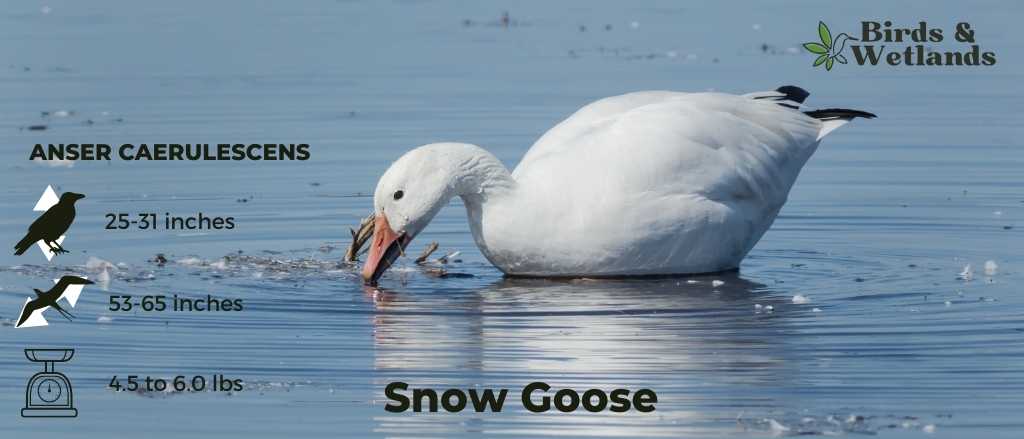
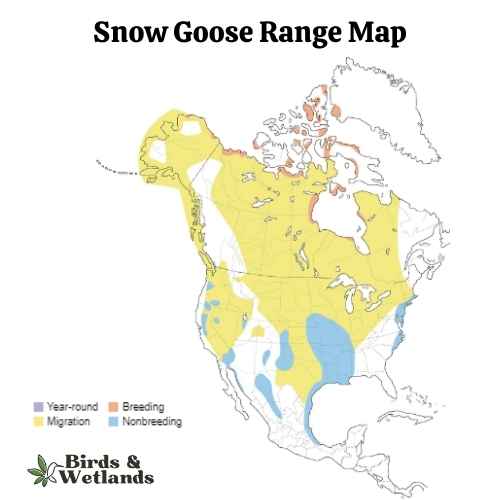
Snow Goose Sound
Scientific Name: Anser caerulescens
Length: 25 to 31 in
Wingspan: 53 to 65 in
Weight: 4.5 to 6.0
The Snow Goose is a large species of waterfowl known for its vibrant white plumage and significant migratory flights.
Appearance: True to their name, Snow Geese are predominantly white with black wingtips. They also have a pink bill, pink legs and feet. A color morph, known as the “Blue Goose,” displays a bluish-gray body with a white head, but is considered the same species.
Diet: Snow Geese primarily feed on plant matter, such as grasses, sedges, and small grains. They can often be seen in large flocks foraging in fields and marshes, and during migration and winter, they can cause considerable damage to agricultural fields due to their feeding habits.
Reproduction: Snow Geese typically nest on the tundra, near water bodies. The female builds the nest and lays a clutch of about 3 to 5 eggs, which she incubates alone for approximately three weeks. Once hatched, the goslings can feed themselves but stay with their parents for protection until they can fly.
Like other bird species, snow geese over winter in Florida.
Canada Goose
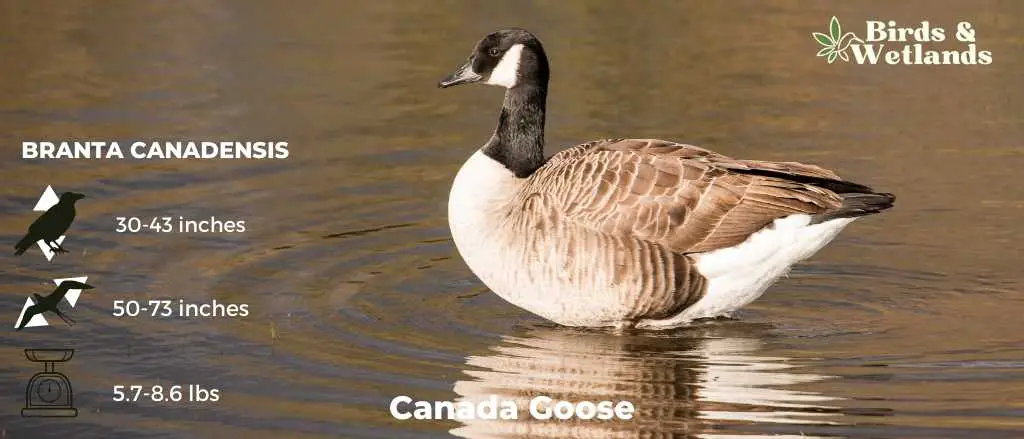
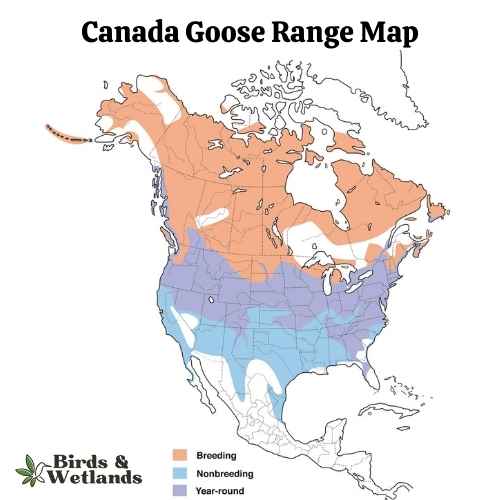
Canada Goose Sound
Scientific Name: Branta canadensis
Length: 30 to 43 in
Wingspan: 50–73 in
Weight: 5.7–14.3 lb
The Canada Goose is a large, well-known species of waterfowl noted for its distinctive appearance, familiar “honk,” and migratory behavior.
Appearance: Both male and female Canada Geese have a similar appearance, featuring a black head and neck with distinctive white patches on the cheeks and chin. The body is primarily brown with a lighter, often white, underbelly.
Diet: Canada Geese primarily feed on plant matter, including grasses, aquatic vegetation, and grains. They can often be seen grazing in parks, lawns, and fields, as well as dabbling in water bodies.
Reproduction: Canada Geese typically nest on the ground near water bodies, often on islands or other isolated areas to avoid predators. The female lays a clutch of about 4 to 6 eggs, which she incubates alone for around a month.
Canada Geese remain the most popular in Florida and are resident year round. Large flocks of canadian geese mate in Florida, and the pairs remain together for life.
Many people have a natural fear of geese, especially the giant Canadian geese, which are large, but remember as long as you don’t get too close to their nest, they will avoid you.
Can you hunt geese in florida?
Geese are federally protected however during hunting season as long as you have a huntice licence, a Florida waterfowl permit, a migratory bird permid and a federal duck stamp you can hunt geese in Florida.
If you hunt on a wildlife management area you will also need a permit and know the season (not the mating season) and bag limits.
Hunters will need a hunting license, a Florida waterfowl permit, no-cost migratory bird permit and a federal duck stamp to hunt waterfowl. If you are hunting on a wildlife management area, you will also need a management area permit.

Jim Addison is an avid bird watcher and has been obsessed with the activity since he was a young boy.
He has traveled all over North America in search of new and interesting species to observe, and his detailed knowledge of the subject makes him a sought-after expert on the topic.

